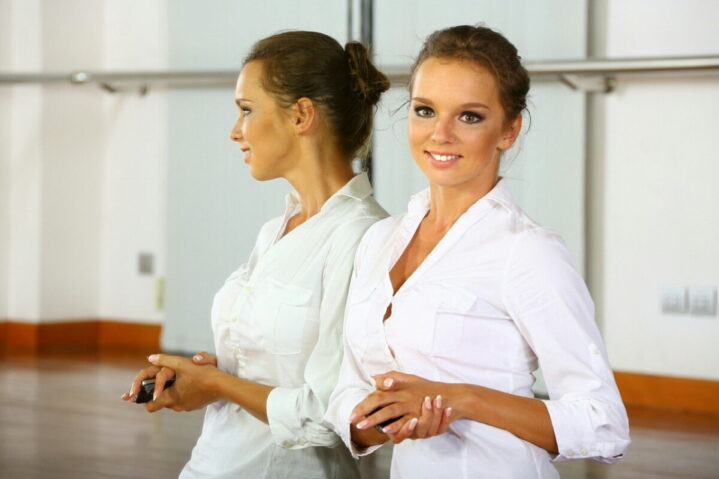
Meet the young and beautiful Julia
Where were you born, got your education, brought up? When did you decide that you wanted to be a ballet dancer? What age did you start? Who was your first teacher? What was your favourite role? How many years have you been performing?
So many things I wanted to know about this fascinating woman.
“I was born in the town of Michurinsk, in the Tambov region, in Russia. The town was named after the great biologist Ivan Vladimirivich Michurin. One of the main town attractions is Michurinsk Choreography School for Children, which celebrated its fiftieth anniversary this year. When I was 4 years old, my parents took my elder sister and me to ballet classes. At that age I so wanted to become a ballet dancer. First, my love for this beautiful and spiritual art was infantile and inconsequent. However, thanks to my parents’ upbringing and support this hobby has grown into my professional occupation.
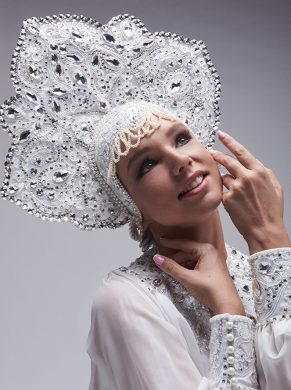 My childhood was filled with exciting concerts, cheerful concert tours and travelling, and with classical and folk dance lessons every day, listening to music, ballet history lessons and learning to play the piano at school and at home. I wanted to be as good as my mother at playing the piano, she can play any piece of music masterly without music sheets she can play by ear. I liked studying equally at secondary school was good in the gymnasium, and enjoyed subjects such as history, literature and foreign languages. All at the Choreography School an institution with a great history. My first teacher was Lyubov Viktorovna Benderskaya who taught us not only classic “pas”, but instilled the love for ballet in us. I started to explore this profession taking my lead from her, learning by her interaction with my classmates and I.
My childhood was filled with exciting concerts, cheerful concert tours and travelling, and with classical and folk dance lessons every day, listening to music, ballet history lessons and learning to play the piano at school and at home. I wanted to be as good as my mother at playing the piano, she can play any piece of music masterly without music sheets she can play by ear. I liked studying equally at secondary school was good in the gymnasium, and enjoyed subjects such as history, literature and foreign languages. All at the Choreography School an institution with a great history. My first teacher was Lyubov Viktorovna Benderskaya who taught us not only classic “pas”, but instilled the love for ballet in us. I started to explore this profession taking my lead from her, learning by her interaction with my classmates and I.
My profession doesn’t excuse any signs of dishonesty. The main thing that the school can be proud of is its students because the art of choreography has become part of their lives. There is continuous work in the field of search and support for gifted children. One of the main priorities of Russia is the development of cultural and intellectual potential in people of all ages. The support that gifted children receive throughout Russia, the programmes that are developed for all regions of the Russian Federation: “Federal support for gifted children”. After achieving some personal and professional goals, winning Russian and international competitions, at the age of 13 I was awarded the Ministry of Culture Scholarship “Young talents of Russia”.
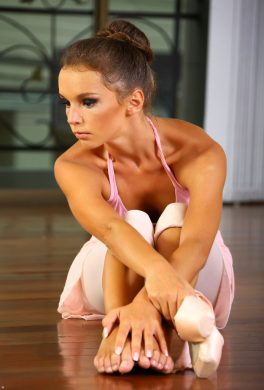 Further education continued at the federal state funded educational institution of higher education “The Moscow State Academy of Choreography” at the Bolshoi Theatre. A wonderful teacher, professor, merited master of the arts of Russia Lyudmila Alexeevna Kolenchenko led the classic dance classes. The scholarship holder award “Young talents of Russia” was presented by Leonova Marina Konstantinovna, the rector of the Moscow State Academy of Choreography, People’s Artist of Russia, PhD in Art Studies, professor and a worldwide renowned ballet dancer. From that moment ballet became my life. I performed a variation of “Giselle”. For performing a principal part in “Chippolino” I was given a diploma “Blue bird” at the Russian National Child’s Festival of ballet theatres in Moscow and a diploma of the studio “Entrée” for the achievements in the ballet art dancing “Towards the dream”, Moscow. My dream came true when I was asked to perform the part of Kitri in “Don Quixote”.
Further education continued at the federal state funded educational institution of higher education “The Moscow State Academy of Choreography” at the Bolshoi Theatre. A wonderful teacher, professor, merited master of the arts of Russia Lyudmila Alexeevna Kolenchenko led the classic dance classes. The scholarship holder award “Young talents of Russia” was presented by Leonova Marina Konstantinovna, the rector of the Moscow State Academy of Choreography, People’s Artist of Russia, PhD in Art Studies, professor and a worldwide renowned ballet dancer. From that moment ballet became my life. I performed a variation of “Giselle”. For performing a principal part in “Chippolino” I was given a diploma “Blue bird” at the Russian National Child’s Festival of ballet theatres in Moscow and a diploma of the studio “Entrée” for the achievements in the ballet art dancing “Towards the dream”, Moscow. My dream came true when I was asked to perform the part of Kitri in “Don Quixote”.
The school’s mission is to conserve the Russian classic ballet school traditions. Teaching programmes of the Russian Ballet Academy n.a. A.Y. Vaganova are used at the Choreography School. We learnt and danced variations from “The Nutcracker”, “Esmeralda” and “Swan Lake”. The Choreography School for Children carefully preserves the traditions of the Russian classic ballet school. The school contributes immensely to the development of the Russian culture in general: in 2015 it became the winner of the all Russia competition “50 best art schools for children”, organised by the Russian Ministry of Culture. In 2016 my sister Yana V. Tutarskaya, became the director of the Choreography School for Children in Michurinsk, won the all Russia competition in the category “The Best Teacher of an Art School for Children” of the Russian Ministry of Culture. In 2012 I got a higher education diploma, specialty: “The Art of the Choreographer” in the Academy of Culture and Arts of State University n.a. G.R. Derzhavin in Tambov. For more than 10 years I devoted my life to my profession and ballet was my life. I tried to take part at as many different master classes as I could in a bid to upgrade my skills, I always learnt something new.

How did you get to the Russian Embassy School? How old are your students? How long have you been teaching? Are male students interested in ballet? Do you have a special dream, a goal that you would like to achieve in the future?
I started teaching at the Russian Embassy School in an official way – by writing a letter to the Embassy of the Russian Federation in the Kingdom of Thailand. Soon after I received a positive reply, I was approved and I started teaching. That was in 2014, thanks to H.E. Mr Kirill Barsky, Ambassador of the Russian Federation to the Kingdom of Thailand, there is a ballet school at the Russian Embassy in Thailand. The secondary school at the Russian Embassy in Thailand is a specialised structural educational unit of the Embassy of the Russian Federation. It carries out educational activities in the programmes of primary and basic general education. However, Russian classical traditions of education provided for boys and girls, in addition to basic subjects, studying the foundations of classical dance disciplines. Currently, several dozen pupils are attaining ballet classes at the Embassy school.
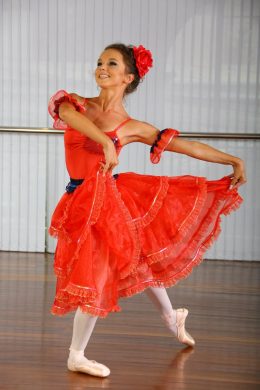 Such subjects as classical, historical folk or folk character dance, music, rhythmic gymnastics and swimming contribute to the formation of a diversified and well-developed student personality. Students can show their talents at school and visiting “field” concerts, in state events and receptions organized by the Russian Embassy in Thailand. In addition to classical variations from Russia’s ballet heritage, children perform with great pleasure “Kalinka” dance (especially boys, as this choreography involves performing complex dance tricks, which require good physical fitness and endurance from the students). “Kalinka” is our visiting card and this dance is most popular with the local audience. I start enrolling children to my classes from the age of 3. Also I teach Russian ballet to Thai children as well as children of other nationalities at the Dance-center school of Performing and Arts. My foreign students really like learning Russian ballet, they happily come to classes and try very hard to carry out movements in a competent, academically and musical way.
Such subjects as classical, historical folk or folk character dance, music, rhythmic gymnastics and swimming contribute to the formation of a diversified and well-developed student personality. Students can show their talents at school and visiting “field” concerts, in state events and receptions organized by the Russian Embassy in Thailand. In addition to classical variations from Russia’s ballet heritage, children perform with great pleasure “Kalinka” dance (especially boys, as this choreography involves performing complex dance tricks, which require good physical fitness and endurance from the students). “Kalinka” is our visiting card and this dance is most popular with the local audience. I start enrolling children to my classes from the age of 3. Also I teach Russian ballet to Thai children as well as children of other nationalities at the Dance-center school of Performing and Arts. My foreign students really like learning Russian ballet, they happily come to classes and try very hard to carry out movements in a competent, academically and musical way.
My dream is that one day one of my students will become a famous ballerina as Anna Pavlova, Galina Ulanova, Mathilde Kschessinska. And, of course, I want as many children of different nationalities, Russian or Thai, children from other countries as possible, to love the Russian ballet. At the moment, me and my students – we are preparing for a very important and high-level event – Bangkok International Festival of Dance and Music. This event will provide a unique opportunity for my students to demonstrate their skills and talent on the same stage with famous Russian ballet dancers.
How long are you considering to stay in Bangkok? Are you happy here? Apart from the classical dance, do you have other hobbies? You travelled across Thailand, do you have other places that you would like to visit? Do you understand Thai language? Do you love spicy food? Do you miss Russia?
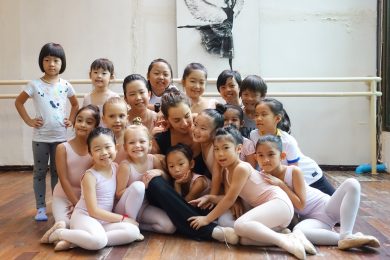 I love my work and my students. Indeed, I feel quite happy in this country. It is difficult to imagine that I felt different in another state. The subjects of the Kingdom are very friendly, sympathetic, and, in general, really awesome people. Yes, it’s true, the Thai language is very beautiful, melodic, but at the same time very complex. And it is this circumstance that allows Thailand and its population to preserve their identity, mystery and uniqueness. In June of this year, after participating in the International Festival of Arts and Culture on the stage of the concert hall of the Srinakharinwirot University I truly immersed myself in the magnificent, unknown world of Thai national dance. I was impressed by the colorfulness of the costumes, the uniqueness of the images that cannot be seen in any country in the world.
I love my work and my students. Indeed, I feel quite happy in this country. It is difficult to imagine that I felt different in another state. The subjects of the Kingdom are very friendly, sympathetic, and, in general, really awesome people. Yes, it’s true, the Thai language is very beautiful, melodic, but at the same time very complex. And it is this circumstance that allows Thailand and its population to preserve their identity, mystery and uniqueness. In June of this year, after participating in the International Festival of Arts and Culture on the stage of the concert hall of the Srinakharinwirot University I truly immersed myself in the magnificent, unknown world of Thai national dance. I was impressed by the colorfulness of the costumes, the uniqueness of the images that cannot be seen in any country in the world.
For several years I have been practicing ashtanga – yoga at the Ashtanga Institute (AYBKK). This type of yoga really exerts discipline on you and helps to tune in for a working day. One of my extreme hobbies is wakeboarding. I really like spicy food, and I think that Thai cuisine is one of the best in the world. In Thailand, I would like to visit the Similan Islands, in Europe – The Hague, and my real dream is to travel to Lima – the capital of Peru!
Yes, there is one thing that I really miss – it’s the Russian famous winter.



